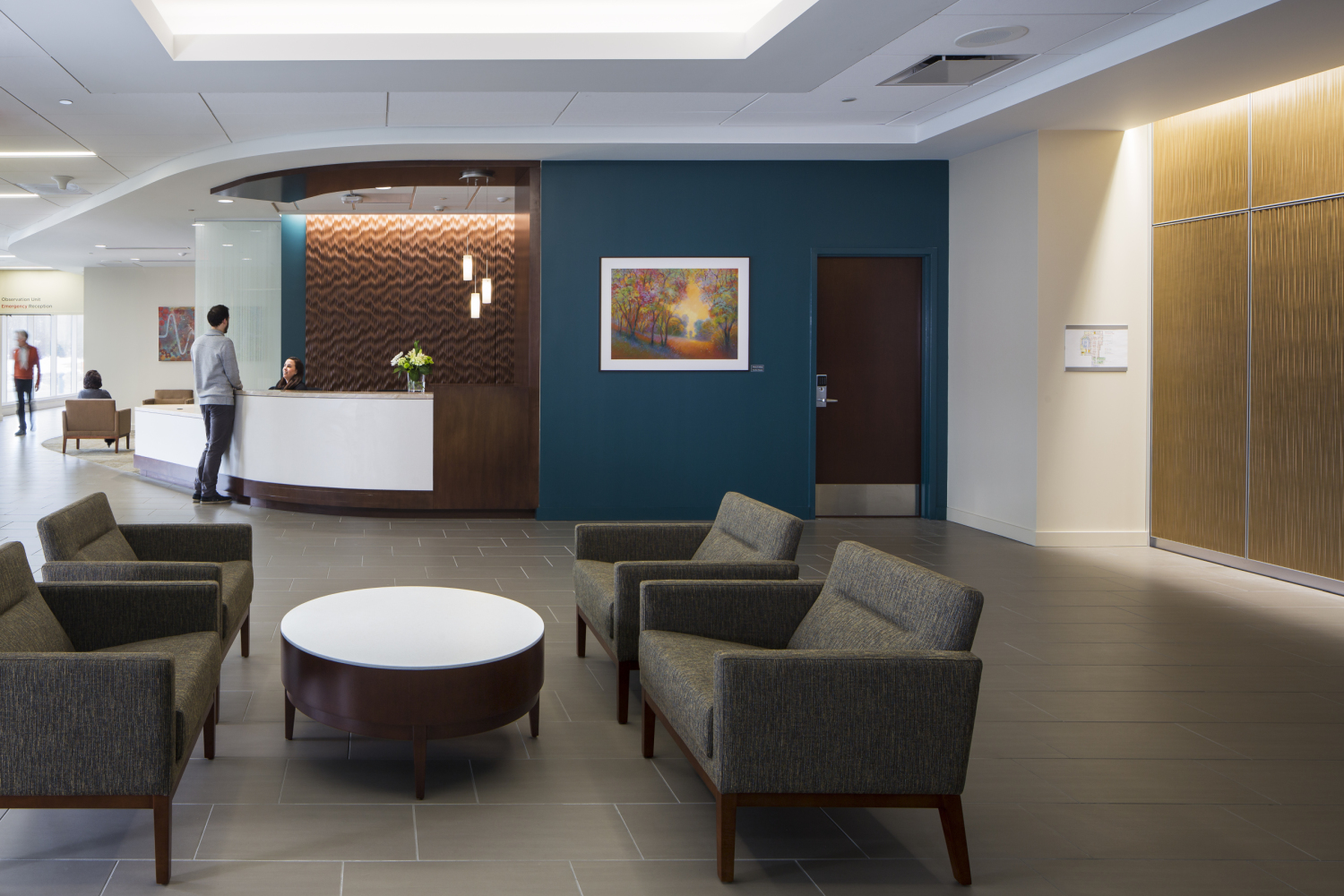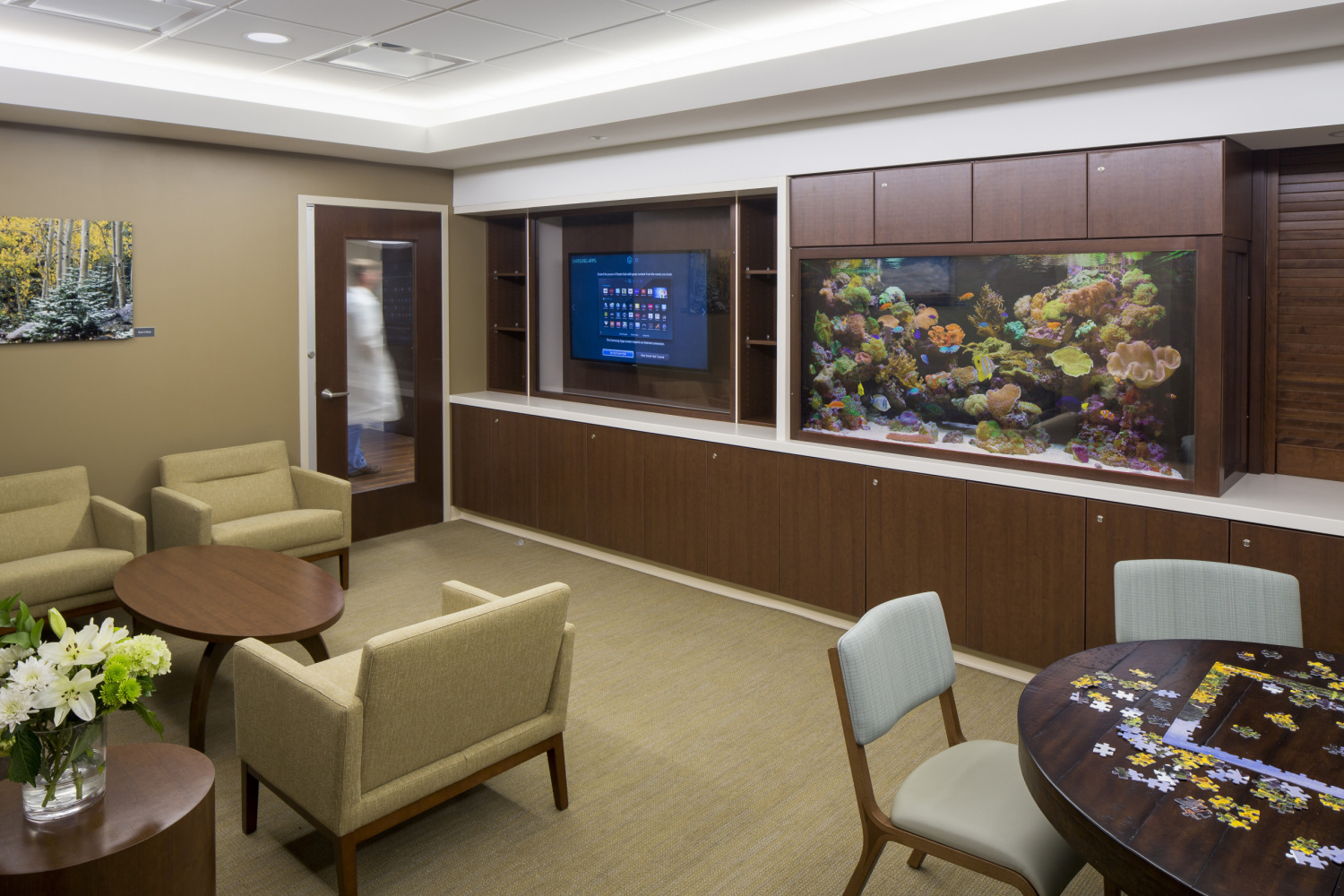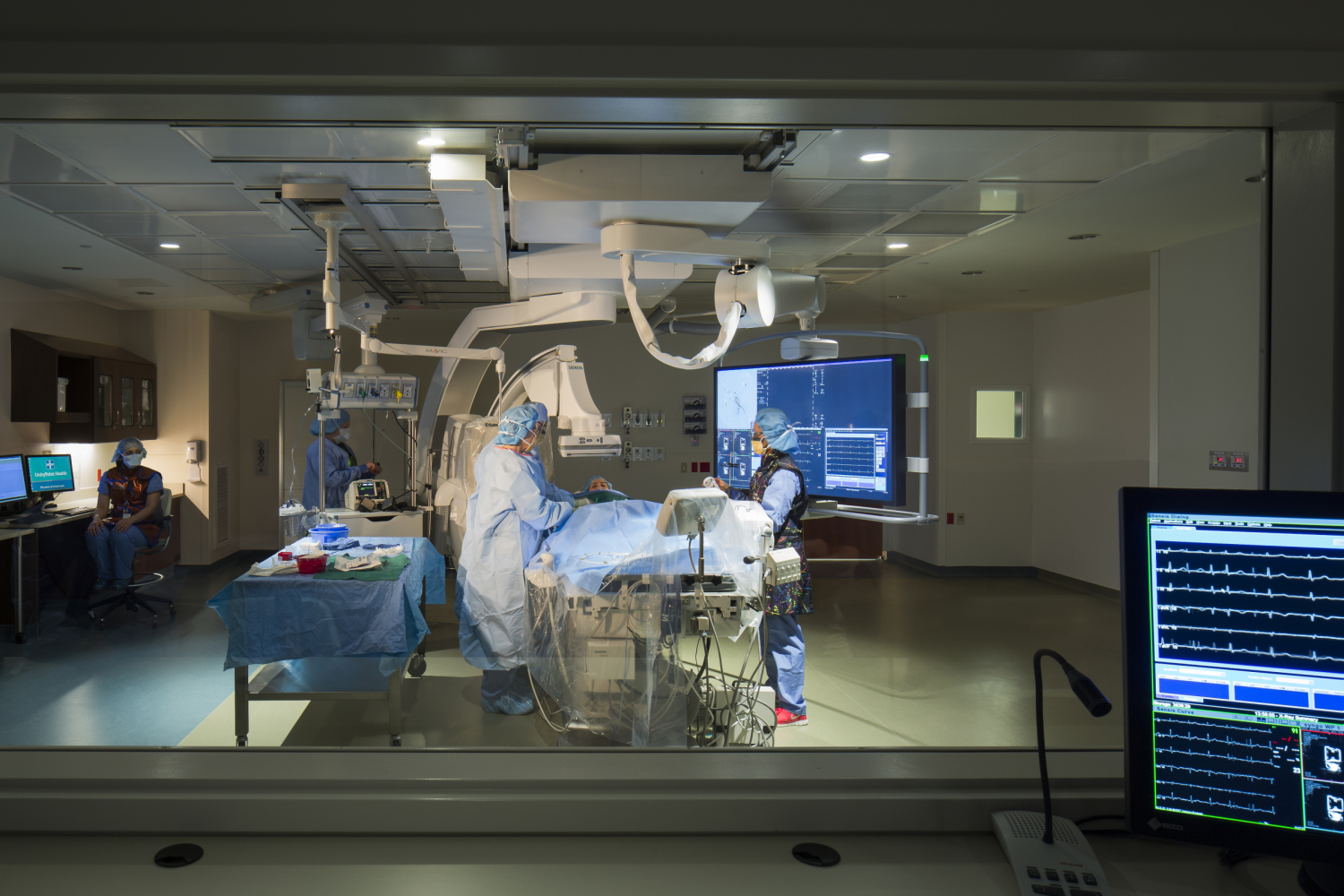Advancing the evidence case for patient care interventions
UnityPoint Trinity’s former emergency department (ED), a level-II trauma center, was undersized to meet existing demand and not designed to support current models of emergency care. Future-state volume projections indicated the ED could expect annual volume to increase by 20 percent by 2020, with 12 percent of that volume from behavioral health patients due to the closure of nearby psychiatric hospitals. Given this expected increase in utilization, the hospital needed to increase capacity, expedite patient throughput,and address a number of problems with patient and staff flow.
The newly expanded emergency department includes multiple solutions to address the current models of care and projected increase in patient volume. Walk-in patients are met by a clinical greeter, with close proximity to treatment stations to support a “direct bedding” strategy, allowing triage to be performed at the bedside. Standardized treatment stations in the main ED allow for maximum flexibility in the use of space, so that any ED patient can be cared for in any room. Additionally, three of the treatment stations have been outfitted with security measures to facilitate rapid conversion to a behavioral health safe treatment station in a matter of seconds.
A crisis stabilization unit (CSU), in close proximity to the ED, allows behavioral health patients to receive medical screening in a calm environment that promotes de-escalation. A living room component, located within the secured zone of the CSU, provides a relaxing and non-institutional environment for medically stable patients. The CSU has been identified by Sg2 and the Robert Young Center as a best practice in the continuum of behavioral healthcare. As part of this project, our research team is conducting a multi-year study that examines whether changes to both process and structure in the CSU are linked to improvements in patient and staff satisfaction, quality of care, safety and legal and financial targets.
By providing more capacity and improved access in the emergency department and providing a 12-bed Observation Unit, Trinity Rock Island was able to improve outcomes and reduce the cost of delivering emergency services. Together, improved access/additional capacity and capabilities to reduce unnecessary admissions improved the health care and well-being of the market area population:
- Door to disposition time for behavioral health patients was reduced to 90 minutes.
- Staff satisfaction and willingness to recommend employment went up 10 percent.
[CannonDesign’s] leadership team is outstanding. They are very respectful of everyone’s opinions. Their knowledge regarding best practices for both Emergency Care and Cardiac Care has kept us all on track to design a project that will deliver the best care for every patient.
Sue Beswick, Director of Emergency Services, UnityPoint Trinity Rock Island



